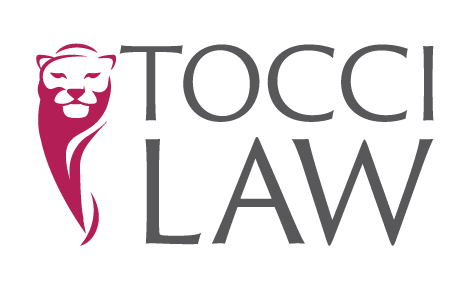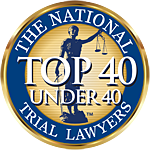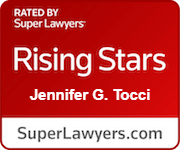Personal injury cases in Suffolk and Nassau Counties, like other types of cases, have a general outline and procedure that must be followed. Below is a summary of how most personal injury cases flow from the start of the case through trial. Each case is unique and there can be other factors that change its progression; however, this outline will provide you with an overall picture of how personal injury cases typically proceed.
Beginning Stage:
Before you step foot into the courthouse, you need to ensure you have the tools available to be successful. You do not want to go in guns blazing only to realize you do not have the evidence to prove your case. There are two parts to every personal injury case: liability (or who is at fault) and damages (pain and suffering resulting from the accident). You must be able to show both parts. The two biggest components in the beginning stage are selecting a personal injury attorney and gathering evidence. If you select the right attorney, they will take control of gathering evidence. At our firm, your job is to treat your injuries; we take care of everything else.
Starting a Lawsuit:
This is the initial litigation stage, where the lawsuit commencement (starting) papers, in the form of a Summons and Complaint, are filed. The court will issue an index number, which identifies your case in that courthouse. The filing of the lawsuit satisfies the statute of limitations. Once the Summons and Complaint are filed, they need to be personally served on each defendant (party being sued). Service of the Summons and Complaint gives the court jurisdiction over the defendant and starts the clock for the defendant’s time to answer the lawsuit. The lawsuit answer is cleverly called an “Answer.” In the Answer, each defendant must “admit,” “deny” or “deny knowledge and information sufficient to form a belief” for each allegation asserted in the Complaint. The plaintiff (party who started the case) has to prove the allegations to which the defendant did not admit.
Pre-trial Litigation:
After the initial papers are served, the case is in the pre-trial litigation phase. The first aspect of the pre-trial litigation phase is the discovery phase, where the parties exchange the evidence to be used at the time of trial. The evidence required to be produced by each party may be broader than what is relevant or permissible at trial. Each party is provided the opportunity to learn enough about the case and the available evidence so that they can either prosecute or defend their position. Pre-trial litigation is a significant portion of the case’s progression. The aspects of pre-trial litigation is change between cases, and the discovery below is the typical type of discovery that takes place in a personal injury case.
Initial Discovery:
In a personal injury case, the defendant, usually along with the Answer, serves an array of demands. Those demands must be responded to, even if the response is an objection. The plaintiff has to serve a “Bill of Particulars,” which is a document that sets forth in detail the claims against the defendants and the injuries of the plaintiff. The Bill of Particulars is extremely important because anything that is not included in the Bill of Particulars cannot be claimed at the time of trial. In addition to the Bill of Particulars, all evidence that each party intends to use at trial must be produced upon demand by the other parties.
Preliminary Conference:
The discovery phase may be completed before or after the first court appearance, called the “Preliminary Conference.” If discovery is incomplete before the Preliminary Conference, which is most often the case, the Preliminary Conference Order will set forth the time for each party to compete discovery and the time to be ready for trial.
Depositions:
Once discovery is exchanged, and the parties have a clearer picture of the claims, the plaintiff’s injuries, the amount of insurance coverage available, the defendant’s assets, the evidence each side has against the other, the parties will proceed to Depositions (also called Examination Before Trial). A deposition takes place before a court reporter, who records every statement, and provides a transcript that can be used as evidence. The attorney for the other party asks the deponent (person being deposed) questions and the deponent has to answer under the penalties of perjury. Your attorney should fully prepare you in advance for a deposition. Generally, the plaintiff’s deposition comes first, followed by the depositions of the defendants. Frequently, once depositions are complete, the parties are in a position to enter into settlement negotiations. With all of the evidence on the table, and transcripts of each parties’ testimony available for review, it is easier for each side to evaluate their potential for success or loss at trial.
Mandatory Settlement Conference:
In Nassau and Suffolk Counties, personal injury cases are required to proceed to an early settlement conference. Ideally, depositions are complete before the early settlement conference, as it makes it easier for the judge to settle the case. Parties may be reluctant to settle if they believe a deposition might reveal evidence favorable to them. At the early settlement conference, the judge gives each party the opportunity to express their position and intended outcome. If the judge opines that the case should settle, the judge will help the parties to resolve the dispute. There is no obligation to settle at this court conference. If the case does not settle, the case will be set on a track that prepares for trial.
Independent Medical Examination (IME):
In a personal injury case, following the plaintiff’s deposition, the plaintiff must submit to a medical examination by the defendant’s physician. This exam is called an Independent Medical Examination (IME). If the personal injury case is an auto accident case, the IME is similar to the IME for No-Fault. There are special court rules that govern this examination. Our firm hires an IME Observer, who acts as a witness if the doctor should be untruthful, and who directs you to answer or not answer questions asked by the defendant’s doctor. After the exam, the defendant must provide the plaintiff with a detailed report prepared by their physician.
Pre-trial Motions:
Once discovery is complete, each side has the opportunity to submit motion papers to the court. The motions made at this stage include summary judgment motions, motions to dismiss, and motions in limine. Summary judgment motions request that the court decide certain aspects of the case before trial, limiting the number of issues that the jury will decide. Motions in limine are to request that particular topics or evidence be excluded from trial. A motion to dismiss may be made where the defendant believes there is no case, they are not the right defendant, or they have a defense such as statute of limitations that bars the case from proceeding successfully.
Once motions are decided, the typical progression is to proceed to trial.
Jury Selection:
At this point, trial is imminent. All attorneys appear in court and conduct “voir dire” or examination of potential jurors. Each side has the opportunity to select jurors and eliminate jurors within the trial court rules. Once a jury is selected, the next step is to proceed to opening statements at trial. However, it is almost always the case that the judge makes one last attempt to procure a settlement in the case before opening statements. If settlement is possible, the chances are increased, because the defendant usually has an insurance adjuster who has authority to offer funds present at the courthouse. If the parties are unable to settle, trial commences, and the jury will render a verdict.
Types of Trials:
In Suffolk and Nassau Counties, the trials are automatically bifurcated (split into two parts). Liability is tried first and if the defendant is found liable, damages are tried. The jury will render a verdict, which ends the case, unless one of the parties appeals the jury’s decision. In such event, a higher court may re-evaluate the jury’s verdict and either set it aside or affirm jury’s decision. If there are no appeals, the case is over, and the verdict from the jury is the result of the case.
The parties may instead conduct a summary jury trial, with relaxed adherence to the rules of evidence, and no right to appeal the decision. The advantage is an expeditious and final outcome. However, there are many disadvantages to a summary judgment trial. Since each cause is unique, whether this avenue is appealing should be discussed with your attorney.
Collecting the Judgment:
Once there is a jury verdict, the plaintiff can seek to collect the judgment or appeal. The defendant has an obligation to pay the jury verdict promptly unless there is an appeal. If the defendant or its insurance company fail to pay timely, that judgment may be collected at 9% interest. If payment is not made, a procedure for collecting the judgment will take place.










